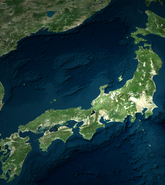NEWARK, CA – September 3, 2020 – RMS®, the world’s leading catastrophe risk solutions company, estimates that total onshore U.S. insured losses from Hurricane Laura will be between US$9.0 and US$13.0 billion. The estimate includes losses to the National Flood Insurance Program (NFIP) of between US$400m and US$600m.
Onshore U.S. insured loss estimates for Hurricane Laura (US$ billions):
| Wind + Surge |
Inland Flood |
NFIP |
Total |
| 8.5 – 12.0 |
0.1 – 0.4 |
0.4 – 0.6 |
9.0 – 13.0 |
“Although Laura avoided major metropolitan areas like Houston and New Orleans, it was still an extremely impactful U.S. event. After making landfall as a powerful Category 4 storm, it maintained its intensity as it moved inland, causing widespread wind and water-driven damage well into interior portions of Louisiana. The extent and severity of these damages has been verified by our development teams via web and aerial-based reconnaissance efforts”, said Jeff Waters, senior product manager, RMS North Atlantic Hurricane Models.
This estimate includes wind, storm surge, and inland flood losses across impacted states, including Louisiana and Texas, based on analysis of RMS ensemble footprints (hazard reconstructions of Laura’s wind field and storm surge) in Version 18.1 of the RMS North Atlantic Hurricane Models and the RMS U.S. Inland Flood HD (high-definition) Model. Ensemble footprints capture the uncertainties surrounding observed hazard, including wind speeds, storm surge, and wave heights.
Losses reflect property damage and business interruption to residential, commercial, industrial, and automobile lines of business, as well as post-event loss amplification and non-modeled sources of loss. Industrial losses include impacts to speciality lines, such as refineries and petrochemical plants, many of which lie along this part of the Gulf coastline.
The estimate also includes losses to the National Flood Insurance Program (NFIP), which RMS expects to reach US$400 million to US$600 million. NFIP losses were derived using an RMS view of NFIP exposure based on the 2019 policy-in-force data published by FEMA, and the Version 18.1 North Atlantic Hurricane Models.
RMS estimates an additional US$1.0bn to US$2.0 billion of insured losses to offshore platforms, rigs, and pipelines in the Gulf of Mexico, due to wind and wave-driven damages. Offshore losses were estimated using the September 2020 vintage of the RMS Offshore Platform Industry Exposure Database.
“Offshore assets have evolved significantly since the impactful hurricanes of Katrina and Rita in 2005 and Ike in 2008, but there is still a prevalence of platforms, rigs, and pipelines in the Gulf region. Many of these assets, including several high-value deep-water platforms, were exposed to the significant wind and wave impacts from Hurricane Laura. At landfall, Laura produced devastating sustained winds of 150 mph [240 km/h], according to both the National Hurricane Center and RMS HWind forecasting service. Our forecasts provided clients with estimates of Laura’s potential impacts in the critical days leading up to landfall,” said Pete Dailey, Vice President, Model Development.
In the two days following landfall, the system weakened considerably as it tracked further inland into Arkansas and parts of the Ohio Valley. Eventually, Laura became a “remnant low” and merged with a passing extra-tropical system, accelerating eastward off the Mid-Atlantic coast.
Hurricane Laura was the twelfth named storm of the 2020 North Atlantic hurricane season, the first major hurricane of the season, and the third landfalling hurricane of the season. It was the Atlantic Basin's earliest forming twelfth storm on record, and a record seventh named storm to make landfall in the contiguous U.S. before the end of August. NOAA expects the Atlantic to remain highly active through the remaining three months of the official 2020 hurricane season.
END
The technology and data used in providing the information contained in this press release are based on the scientific data, mathematical and empirical models, and encoded experience of scientists and specialists. As with any model of physical systems, particularly those with low frequencies of occurrence and potentially high severity outcomes, the actual losses from catastrophic events may differ from the results of simulation analyses.
RMS SPECIFICALLY DISCLAIMS ANY AND ALL RESPONSIBILITIES, OBLIGATIONS AND LIABILITY WITH RESPECT TO ANY DECISIONS OR ADVICE MADE OR GIVEN AS A RESULT OF THE CONTENTS OF THIS INFORMATION OR USE THEREOF, INCLUDING ALL WARRANTIES, WHETHER EXPRESS OR IMPLIED, INCLUDING BUT NOT LIMITED TO, WARRANTIES OF NON-INFRINGEMENT, MERCHANTABILITY AND FITNESS FOR A PARTICULAR PURPOSE. IN NO EVENT SHALL RMS (OR ITS PARENT, SUBSIDIARY, OR OTHER AFFILIATED COMPANIES) BE LIABLE FOR DIRECT, INDIRECT, SPECIAL, INCIDENTAL, OR CONSEQUENTIAL DAMAGES WITH RESPECT TO ANY DECISIONS OR ADVICE MADE OR GIVEN AS A RESULT OF THE CONTENTS OF THIS INFORMATION OR USE THEREOF.





